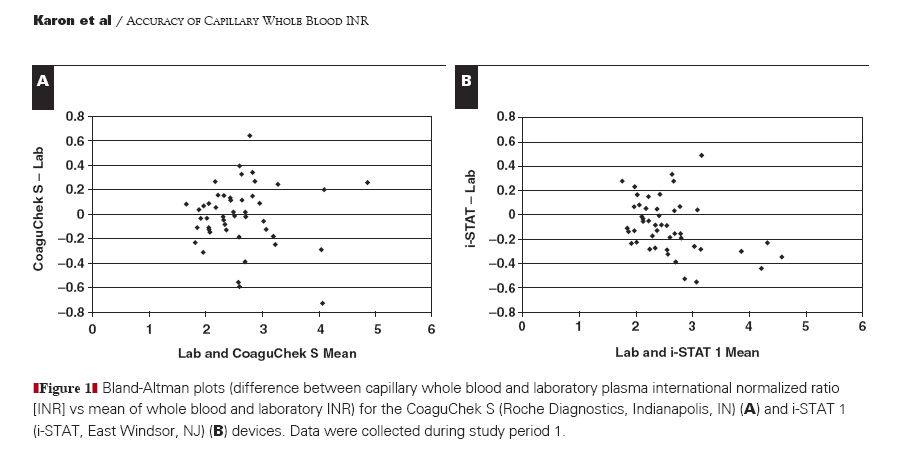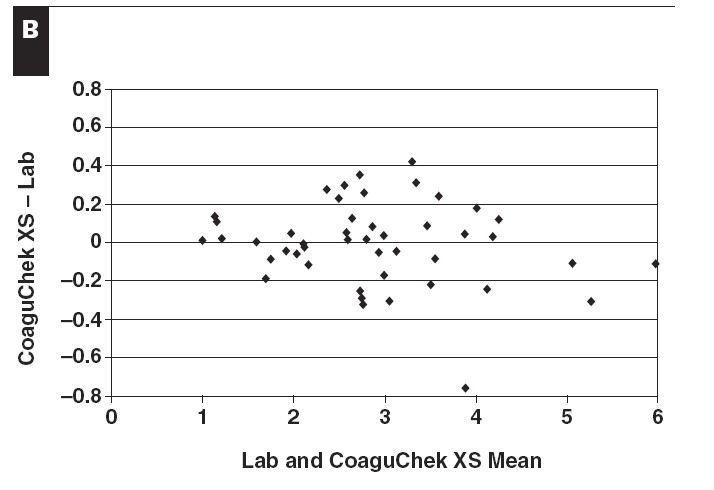Anyone who reads this thread knows that I've been a strong advocate of the Coag-Sense. Years ago, when I compared many meters to blood draws, my focus went to the Coag-Sense and CoaguChek XS. At the time, the Coag-Sense was usually slightly below the lab, and the CoaguChek XS was slightly higher. If my INR somehow rose above 2.5 or so, the difference between Coag-Sense and Labs from the CoaguChek XS was larger, with the XS being increasingly higher than the labs.
I chose the Coag-Sense as the meter that I would trust with my life. I would occasionally have blood draws.
Over the last few years, though, I've questioned the blood draw results, which were often 1.0 higher than the Coag-Sense. Coagusense (the manufacturer) swore that their meters were accurate. They still do.
It was a bit troubling that the labs - even the hospital labs - were always considerably higher than the Coag-Sense.
I recently starated using the CoaguChek XS (I was able to get some strips) and I began testing both against each other. As the INR increased, so did the difference between the two meters. The XS results seemed to be closer to the labs than the Coag-Sense (not SEEMED - WERE).
So, although Coagusense insists that their rsults are accurate, that they carefully test the accuracy of their strips, etc., etc., I get a strong feeling that the Coag-Sense is consistently reporting values that are too low - and that the difference from the lab results and the Coaguchek XS increases as the INR increases.
(I'm stuck going to a 'Coumadin Clinic' on Wednesday. I'll check their CoaguChek XS to my own).
Here are a couple questions:
If you use a Coag-Sense meter, and have gone to a lab or hospital for INR testing, how closely did the results compare to each other?
If you use a Coag-Sense meter and also test (or have tested) with a CoaguChek XS, how close were the results to each other?
I'm not only trying to verify that there IS a significant difference from the Coag-Sense and other methods, and also curious about whether there's something in my blood that somehow confuses the Coag-Sense (my guess is that maybe their values for the reagents are inaccurate - because the method detects an actual clot).
Any feedback would be appreciated.
I chose the Coag-Sense as the meter that I would trust with my life. I would occasionally have blood draws.
Over the last few years, though, I've questioned the blood draw results, which were often 1.0 higher than the Coag-Sense. Coagusense (the manufacturer) swore that their meters were accurate. They still do.
It was a bit troubling that the labs - even the hospital labs - were always considerably higher than the Coag-Sense.
I recently starated using the CoaguChek XS (I was able to get some strips) and I began testing both against each other. As the INR increased, so did the difference between the two meters. The XS results seemed to be closer to the labs than the Coag-Sense (not SEEMED - WERE).
So, although Coagusense insists that their rsults are accurate, that they carefully test the accuracy of their strips, etc., etc., I get a strong feeling that the Coag-Sense is consistently reporting values that are too low - and that the difference from the lab results and the Coaguchek XS increases as the INR increases.
(I'm stuck going to a 'Coumadin Clinic' on Wednesday. I'll check their CoaguChek XS to my own).
Here are a couple questions:
If you use a Coag-Sense meter, and have gone to a lab or hospital for INR testing, how closely did the results compare to each other?
If you use a Coag-Sense meter and also test (or have tested) with a CoaguChek XS, how close were the results to each other?
I'm not only trying to verify that there IS a significant difference from the Coag-Sense and other methods, and also curious about whether there's something in my blood that somehow confuses the Coag-Sense (my guess is that maybe their values for the reagents are inaccurate - because the method detects an actual clot).
Any feedback would be appreciated.
























